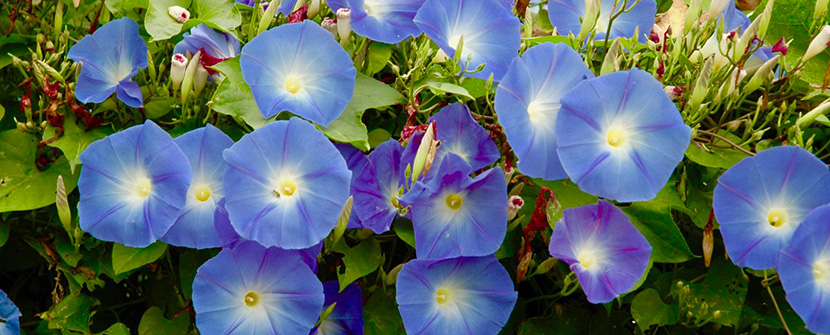The Morning Glory is a beautiful and unique flowering plant that is widely popular around the world for its vibrant colors and delicate, funnel-shaped blooms. This plant belongs to the family Convolvulaceae and is scientifically known as Ipomoea, which includes over 500 species of flowering plants. In this blog, we will explore everything there is to know about morning glory, from its history to its cultivation, and its various uses.
History and Origin of Morning Glory
Morning glory has a rich and fascinating history that dates back to ancient civilizations. The plant is believed to have originated in tropical regions of America and Asia, where it was used for medicinal purposes and as a sacred plant. The Aztecs, for instance, used morning glory seeds in their religious rituals to induce a state of trance and communicate with their gods. The plant was also used by the Mayans for its hallucinogenic properties.
The Spanish first introduced morning glory to Europe in the 16th century, where it quickly gained popularity as an ornamental plant. Today, morning glory is cultivated worldwide as an ornamental plant, and its seeds are still used in some cultures for their psychoactive effects.
Types of Morning Glory
There are several types of morning glory, each with its unique characteristics and growth habits. Some of the most popular varieties include:
- Heavenly Blue: This is the most popular variety of morning glory, known for its large, sky-blue flowers that bloom in abundance.
- Scarlet O'Hara: This variety is known for its deep-red, trumpet-shaped blooms that add a touch of drama to any garden.
- Grandpa Ott: This variety features deep-purple flowers with a white star-shaped center and is often grown on trellises or fences.
- Milky Way: This variety has stunning white flowers with a deep blue center, making it a beautiful addition to any garden.
Cultivation of Morning Glory
Morning glory is a relatively easy plant to grow, making it a favorite among gardeners. Here are some tips for cultivating morning glory:
- Soil: Morning glory prefers well-draining soil that is rich in nutrients.
- Light: Morning glory requires full sunlight to thrive, so make sure to plant it in a sunny spot.
- Water: Water morning glory regularly, keeping the soil moist but not waterlogged.
- Fertilizer: Use a balanced fertilizer once a month during the growing season to promote healthy growth.
- Pruning: Morning glory grows quickly and can become unruly if left unchecked. Prune the plant regularly to encourage bushy growth and remove any dead or damaged branches.
Uses of Morning Glory
Morning glory is primarily grown as an ornamental plant, but it has several other uses as well. Here are some of the most common uses of morning glory:
- Medicinal: Morning glory has several medicinal properties and has been used to treat various ailments such as constipation, coughs, and inflammation.
- Psychoactive: The seeds of some morning glory varieties contain psychoactive compounds that can induce a state of trance or hallucination. However, these seeds can also cause nausea and vomiting and are not recommended for consumption.
- Culinary: Morning glory flowers are edible and can be used to add color and flavor to salads, drinks, and desserts.
Conclusion
Morning glory is a beautiful and versatile plant that has captured the hearts of gardeners and plant enthusiasts around the world. Whether grown for its stunning blooms, medicinal properties, or psychoactive effects, morning glory is a plant that continues to fascinate and intrigue us with its unique characteristics and rich history. With a little care and attention, anyone can cultivate this beautiful plant and enjoy its many benefits.


